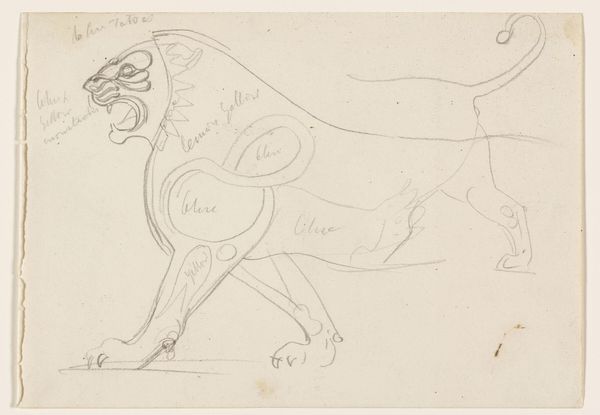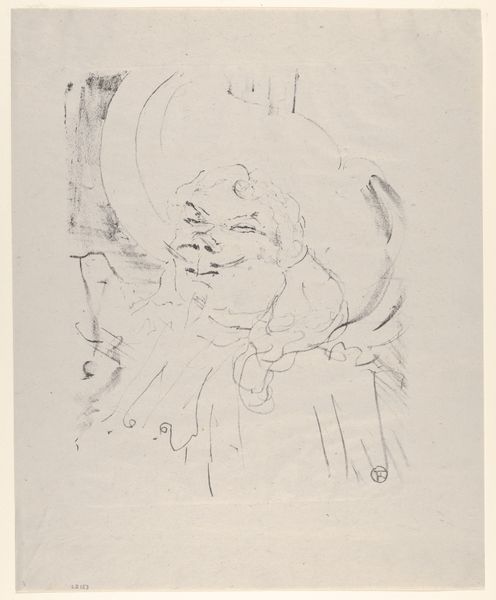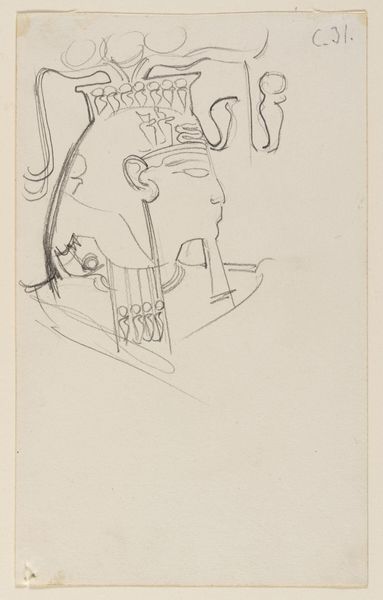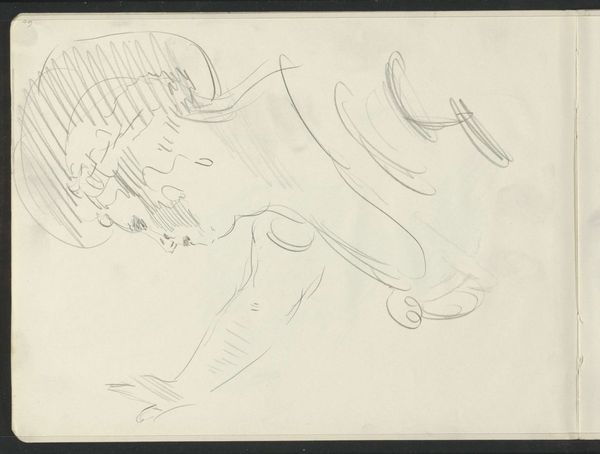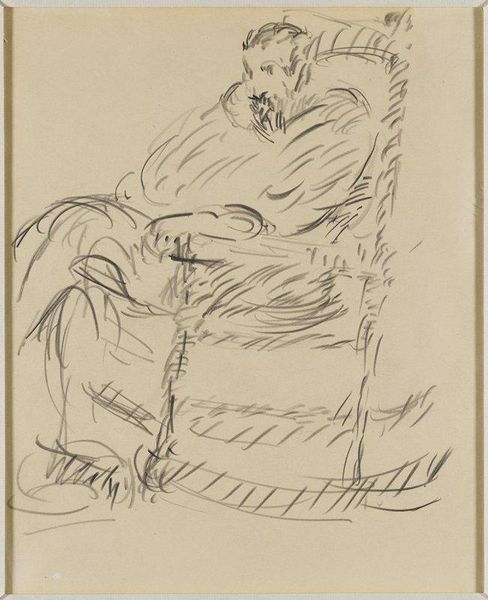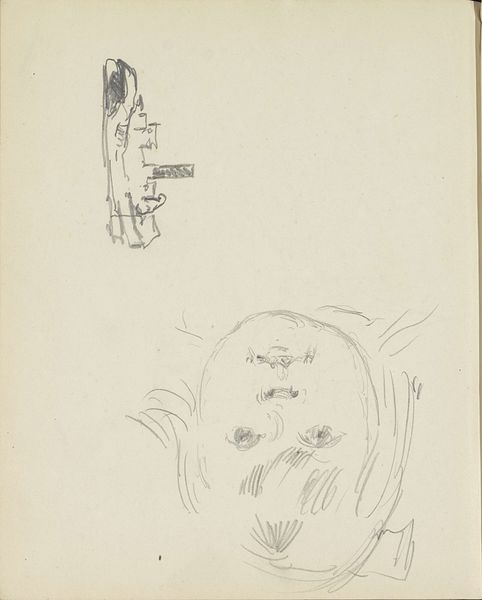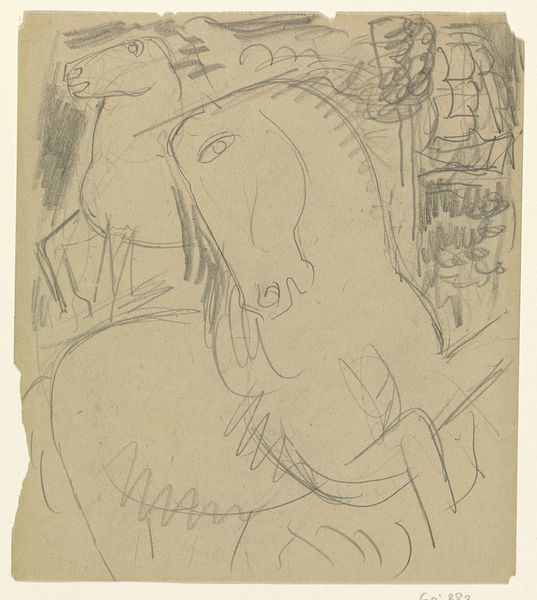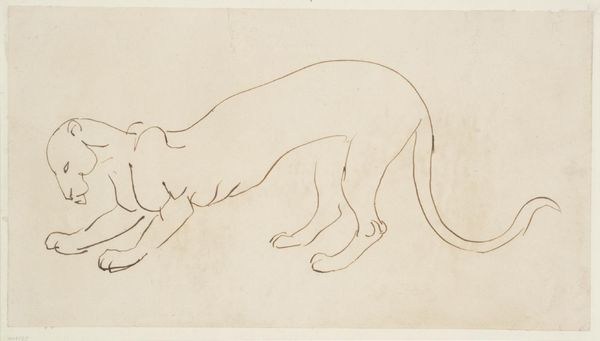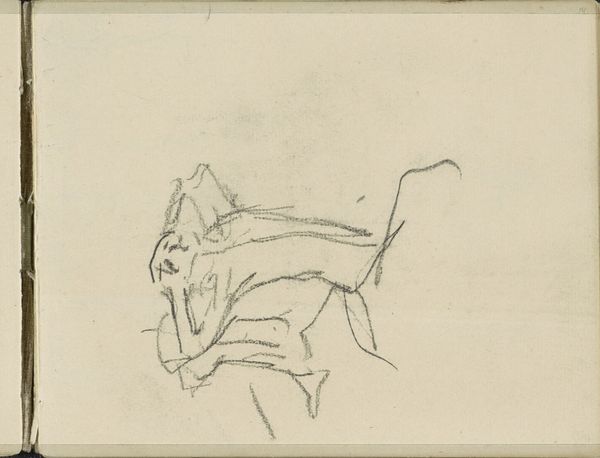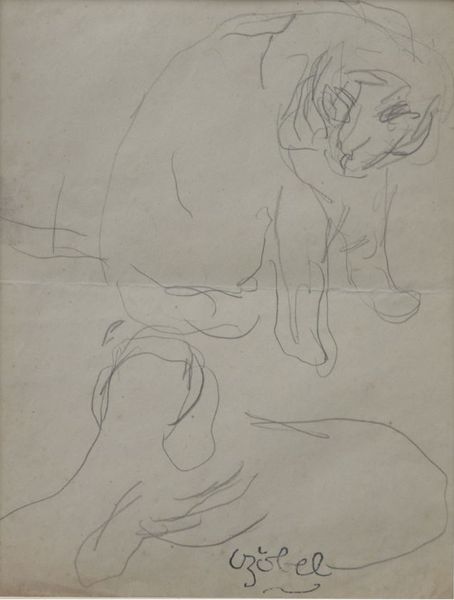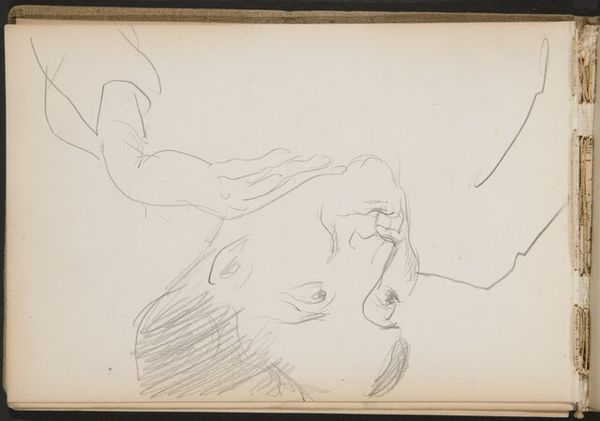
Dimensions: support: 387 x 260 mm
Copyright: CC-BY-NC-ND 4.0 DEED, Photo: Tate
Editor: So, this is Henri Gaudier-Brzeska’s line drawing, "Tiger", from around 1913, housed here at the Tate. It’s a simple sketch, but really captures a sense of contained power, don't you think? How do you interpret this work, especially given Gaudier-Brzeska’s involvement with the Vorticists? Curator: It's crucial to situate Gaudier-Brzeska within the socio-political context of pre-war London. The Vorticists, with their emphasis on the machine age, were actively challenging the established artistic norms. How might this drawing be seen as a response to, or even a critique of, traditional representations of nature and power? Is the tiger a symbol of untamed force, or something else entirely? Editor: That makes me see it differently. It’s less about pure power and more about the tension between the wild and the modern. Thanks for the perspective! Curator: Precisely! Recognizing these tensions lets us connect the artwork to broader conversations about modernity and identity.
Comments
tatebritain 6 months ago
⋮
http://www.tate.org.uk/art/artworks/gaudier-brzeska-tiger-n04520
Join the conversation
Join millions of artists and users on Artera today and experience the ultimate creative platform.
tatebritain 6 months ago
⋮
For Gaudier-Brzeska, animals provided as much fascination as people. He produced an extraordinary number of animal drawings, studying their movement and behaviour in much the same way as he approached his human subjects. As well as observing birds and deer in the park, Gaudier-Brzeska regularly visited London Zoo, sketching the animals so quickly that the ink was often still wet as he turned the page. These drawings manage to capture the anatomy and personality of each animal with only a few simple lines. Gallery label, September 2024
